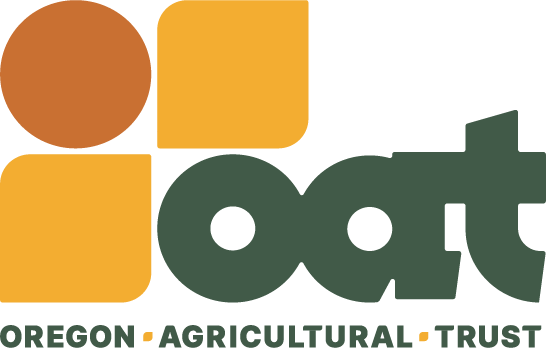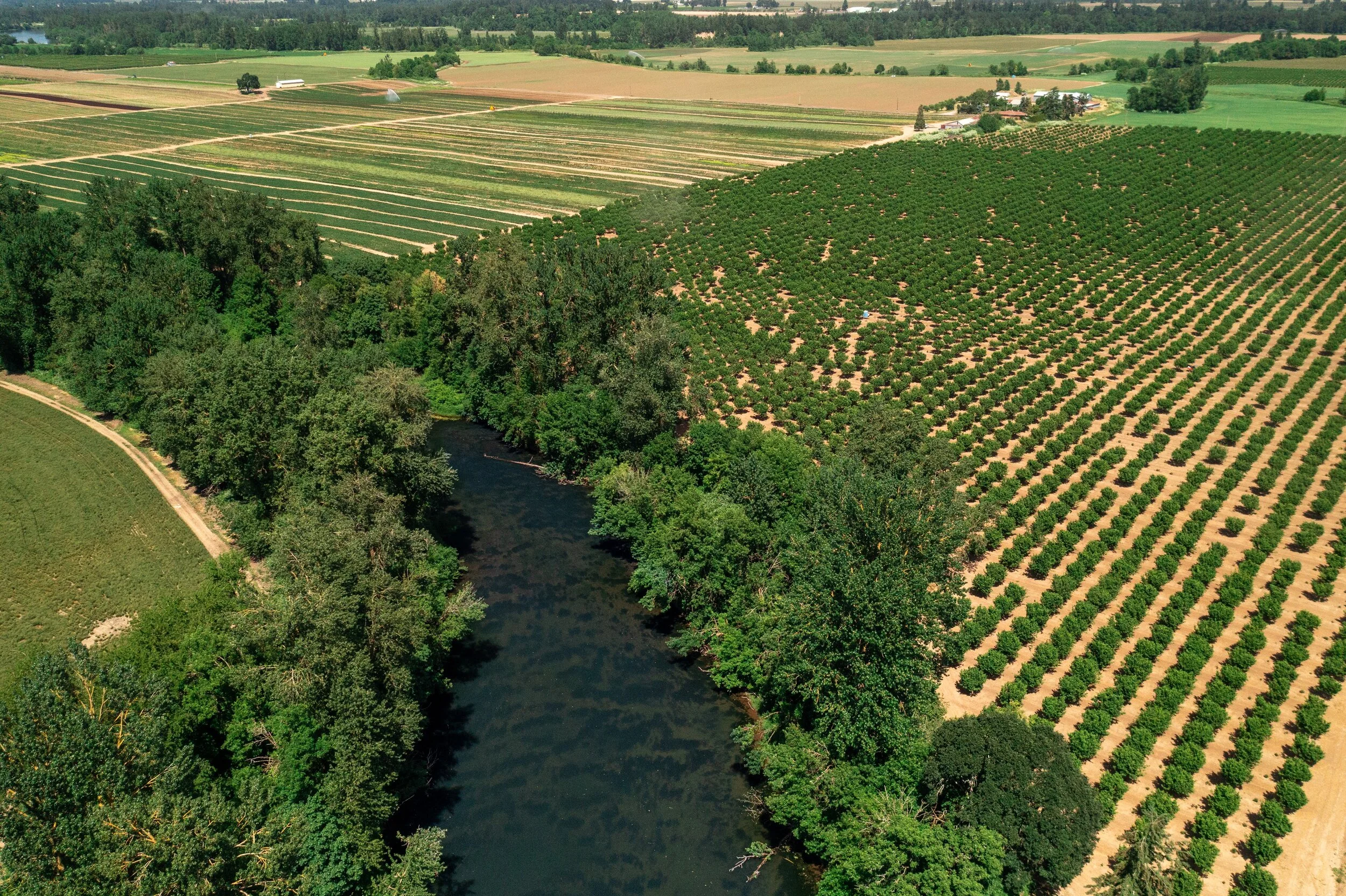Engaging landowners in Eastern Oregon, Jay Gibbs looks to build a foundation of trust and momentum through community interest
by Peter Jensen
Driving through Gilliam County, it may seem like the rolling hillsides outnumber the full-time residents. As a lifelong resident of Eastern Oregon, Jay Gibbs thinks that works just fine. Gibbs lives in Heppner, in Morrow County, works for the Natural Resources Conservation Service, and is a board member for the Oregon Agricultural Trust. He graduated from Helix High School, northeast of Pendleton, and jokes that he was “Top 3 in his class”—out of about 10 kids total. His family ranches on the John Day River. As Oregon is undergoing a sweeping statewide, generational transfer of land, the largest of his lifetime by far, Gibbs’ stake in preserving some of the state’s “last best places” is professional, surely, but also personal. He wants to drive around a county like Gilliam 10 to 15 years from now, look out at the patchwork of landscapes and properties rolling by, and feel a sense of pride that he may have had a role in ensuring those farms and ranches remained working lands.
So, at a forum devoted to conservation easements held in Gilliam County a few years back, you can imagine Gibbs’ excitement at the turnout he saw. Landowners, farmers, and ranchers streamed in, all of them “easement curious” and interested in discussing a tool Gibbs believes will be vital to effective preservation of working lands in Oregon for decades to come. He was amazed by the mix of young and old: beginning farmers and ranchers who were ready to learn, along with those whose lands have been under production for more than a century. Easements represent a valuable safeguard, because landowners agree to give up development rights in perpetuity in exchange for compensation of value that development may represent. Gibbs has been working to transform the “easement curious” to the “easement serious.”
“There were easily half a million acres represented in that room,” Gibbs said of the Gilliam County forum. “I never expected to see the width and the breadth of the audience. We collectively know there’s a high level of interest. We’re kind of on the cusp here in Oregon. That meeting was the kernel that started the process. People have a good experience. Nothing sells conservation easements like somebody having a good experience with one.”
Gibbs knows what’s at stake. Numbers help provide context: The average age of a farmer or rancher in Oregon is 60. That’s up from an average age of 55 in 2002, and 50 in 1982. And, 81% of the state’s farmers and ranchers likely don’t have succession plans. 25% of Oregon’s land is used for farming and ranching, but the amount has declined by almost a half-million acres since 1974. Further, 10 million acres—64 percent—is expected to change ownership in the next 20 years. For Gibbs, that could mean more ag lands in Eastern Oregon turning over to out-of-state, absentee landowners who will place them behind locked gates. That could be a major blow to its agriculture-based economy, and would be devastating to many Oregonians—Gibbs included.
Gibbs sees so many positive stories to tell, which is why he’s so enthusiastic about the formation of the Oregon Agricultural Trust. He sees an abundance of potential win-wins, because conservation easements will work hand-in-hand with the excellent stewardship principles and practices landowners already demonstrate, such as protecting water quality and wildlife habitats and corridors. Gibbs said working lands conservation easements and grazing, in conjunction with fire suppression techniques, could help prevent a catastrophic wildfire on forested landscapes outside of Baker City. Such a wildfire represents the single greatest threat to the city’s drinking water supplies. Gibbs said that if those forests aren’t maintained, a huge wildfire is “a question of when, not if.” Most importantly, he said he’s always thrilled to start conversations with landowners and interested parties from a basis of shared values—a desire to protect clean air, clean water, and wide-open spaces in Oregon.
“Those things are codified in the easement,” Gibbs said. “It’s part of that intrinsic value. Landowners are typically fair to good managers already. They have that conservation ethos. That’s your basis for discussion.”
Jay Gibbs at Smith Rock
And, he wants to continue the positive momentum that sparked in Gilliam County years back. He said it’s so important for landowners to have good alternatives for land trusts as they consider easements, so they can find an organization that matches their wants, needs, and desires. In the U.S., Gibbs said working lands conservation easements have been most effective in regions where a multitude of land trusts exist and they’re compatible—and not in competition—with each other. He said that’s one part of Oregon Agricultural Trust’s mission that is most enticing. It’s a statewide organization, and will partner with landowners in Eastern Oregon, where fewer land trusts exist than on the west side of the state. He is eager to be a resource linking beginning farmers and ranchers with older farmers who want to do a generational transfer of working lands. And, Gibbs is excited at how, by working together, Oregonians can navigate this massive generational transfer while preserving the lands he—and so many others—love so dearly.
“I’m just really excited about the Oregon Agricultural Trust,” Gibbs said. “We’re really early along in this journey. Oregon is just an unbelievably beautiful and diverse state. What are the options for that century ranch? Easements are a relatively new tool in the toolbox in Oregon. ‘In perpetuity’ is a long time. Conservation easements are not for the faint of heart. It’s not a sprint. It isn’t even a marathon. It’s an ultra-marathon.”





